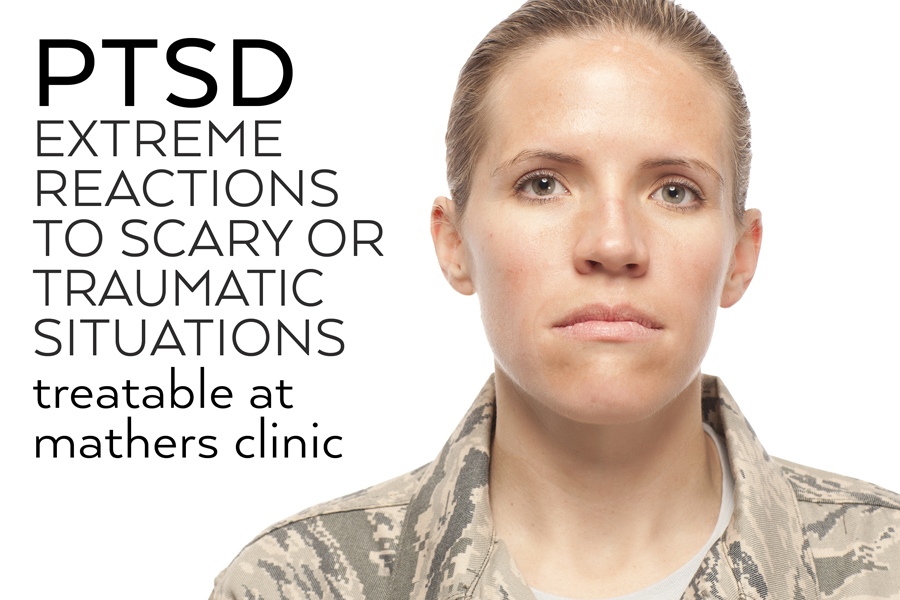PTSD - POST-TRAUMATIC STRESS DISORDERS
OUR SERVICESPost Traumatic Stress Disorder – PTSD
Traumatic Events That Create Fear
When someone experiences a shocking, scary, or dangerous event, they may develop the disorder known as PTSD. It is natural to feel fear during and after a traumatic situation. Fear creates changes in the body that help to defend against dangerous situations or helps to avoid traumatic situations. This “fight-or-flight” response is a typical reaction which protects a person from harm. Almost everyone will experience a range of reactions after a traumatic event, and the majority of people recover from initial symptoms naturally. Those who continue to experience problems can be diagnosed with PTSD. People who have PTSD may feel stressed or frightened even when they are not in danger.


Children Can Suffer From PTSD
Children, adolescents and young adults can have extreme reactions to trauma. The symptoms of PTSD for children, adolescents and young adults may not be the same as adults.
For children less than 6 years old, may show these symptoms:
- Bed wetting after having learned to use the toilet
- Acting out scary event(s) while playing
- Forgetting how to speak or become silent
- Showing signs of being unusually clingy with a parent or with another adult or with someone who they have a close relationship
Adolescents and young adults are more likely to exhibit symptoms similar to those seen in adults. They may also become disruptive, disrespectful and/or destructive. This particular age group may develop feelings of guilt for not being able to prevent injuries and/or deaths. In some cases it can lead to dangerous thoughts of revenge.
If you know or have a child, adolescent and/or young adult suffering from PTSD, please click to learn more about our The Mathers CAYA practice.
Signs & Symptoms
It is natural to have some of these symptoms after a traumatic event, it is natural to have some of the symptoms listed below. Some may have serious symptoms that disappear after a few weeks. This is called acute stress disorder or ASD.
Symptoms may not show up for weeks or months. When the symptoms occur for more than a month and seriously affect one’s ability to function, they might be suffering from PTSD. These symptoms are not due to substance use, medical illness, or anything except the event itself. PTSD is often accompanied by depression, substance abuse, or anxiety disorders.
There are two types of PTSD – ongoing (chronic) and short-term (acute) PTSD. The event needs not to be dangerous, it can be triggered by something sudden and unexpected. Symptoms may not begin until 3 months after the traumatic incident. For some, the symptoms may not become evident until years after the trigger event. If the illness lasts more than a month and interferes with relationships or with their daily life, it can be considered PTSD. The length of time for the recovery of this illness varies and if not treated can become chronic. A psychiatrist or psychologist, can diagnose when someone is suffering from PTSD.
Some of the most common symptoms of PTSD include the following:
- Extreme physical reactions to the triggers of traumatic event: accelerated heart beat, nausea, sweating
- Intense thoughts / feelings of distress when reminded of a traumatic event
- Recurring invasive and upsetting memories of a traumatic event
- Loss of interest in daily activities or life in general
- Lacking a positive outlook for the future
- Flashbacks (when the traumatic event occurs over and over again)
- Recurring nightmares that are related to the event
- Feeling emotionally numb; isolation from friends, family and other people; avoiding feelings / thoughts, activities or places that are reminders of the traumatic event
- Difficulty recalling important aspects of a traumatic event
- Re-Experiencing Symptoms (one or more symptoms)
Re-experiencing symptoms can cause problems in a persons’s every day routine. The symptoms can begin from the person’s own thoughts and feelings. Words, objects or situations that are reminders of the event can also trigger re-experiencing symptoms.
Re-experiencing symptoms include:
- Nightmare
- Flashbacks—reliving the trauma over and over
- Flashbacks accompanied by physical symptoms: heart pounding or sweating
- Scary / frightening thoughts
- Avoidance Symptoms (one or more symptoms)
Words, actions, objects or situations that remind a person of the traumatic event can trigger avoidance symptoms. These symptoms can cause a person to change their daily routine. For example, after a bad car accident, a person may avoid driving or riding in a car.
Avoidance symptoms include:
- Avoiding / staying away from places, events, or objects that are reminders of the traumatic experience
- Avoiding thoughts or feelings related to the traumatic event
- Flashbacks accompanied by physical symptoms: heart pounding or sweating
- Scary / frightening thoughts
- Hyperarousal and Reactivity Symptoms (two or more symptoms)
Hyperarousal symptoms are usually constant, instead of being triggered by things that remind one of the traumatic events. These symptoms can make the person feel stressed and angry and make it hard to do daily tasks: sleeping, eating and/or concentrating.
Hyperarousal symptoms include:
- Easily startled
- Feeling tense or “on the edge”
- Having difficulty sleeping
- Having angry outbursts
- Cognition and Mood Symptoms (two or more symptoms)
Cognition and mood symptoms can begin or worsen after the traumatic event. These symptoms are not due to injury or substance use. These symptoms can make the person feel alienated or isolated from friends or family.
Cognition and mood symptoms include:
Hyperarousal symptoms include:
- Having negative thought about the world and themselves
- Having negative thoughts about oneself or the world
- Difficulty remembering key points of the traumatic event
- Having feelings of guilt, shame or blame
- Loss of interest in activities they previously enjoyed
Risk Factors
Anyone can develop PTSD at any age. This includes, but is not limited to: military veterans, children and people who have been through a abuse, accident, disaster, physical or sexual assault or other traumatic events. PTSD can also occur without experiencing a traumatic event. A trigger event may be the sudden and unexpected death of a loved one.
Genetic make-up may make some people more likely to develop PTSD than others. Studies have found that more women are found to suffer from PTSD than men.
Not everyone with PTSD has been through a dangerous event. Some people develop PTSD after a friend or family member experiences danger or harm. Various factors play a part in the development of PTSD. Some examples are listed below. Risk factors make a person more likely to develop PTSD are listed below. Other factors, called resilience factors, can help reduce the risk of the disorder.
815.444.9999 |
|
Risk Factors & Resilience Factors for PTSD
Factors that can increase risk for PTSD include:
- Dealing with other stressful situations after the traumatic event: loss of a loved one, pain and/or injury, loss of a job, loss of a home
- Having had experienced childhood trauma
- Having little or no support from friends or family, after the event
- Having a history of mental disorders and/or substance abuse
- Feeling horror, helplessness, or high levels of fear
- Repeated incidents of witnessing hurt and/or death: getting hurt, seeing others hurt or seeing someone who is dead
Resilience factors that may reduce the risk of PTSD:
- Seeking support from friends and family
- Learning to feel positive about one’s actions while facing danger
- Locating and joining a support group after the traumatic event
- Developing a positive strategy to cope with traumatic events and to learn from those events
- Learning to effectively act and respond to situations despite having feelings of fear or anger
Treatments & Therapies
A common form of treatment for PTSD may contain a combination of psychotherapy (talk therapy) and/or pharmacotherapy. Each individual with PTSD has unique circumstances which leads to different methods for treatment befitting their specific needs. It is crucial the one being treated with PTSD is treated by a mental health care professional who specializes in PTSD. Each case of PTSD is unique, so do not be discouraged if one method of treatment is not successful. Your mental health care professional will help you find the proper treatment that will work for you.
PTSD is often accompanied by other conditions what must be addressed. These conditions may be, but are not limited to the following: being in an abusive relationship, suffering from persistent traumas, panic disorders, substance abuse, depression, and suicidal thoughts / tendencies. These conditions must be addressed in order to treat PTSD.
Psychotherapy
Psychotherapy involves talking with a mental health professional to treat a mental illness. Psychotherapy can occur one-on-one or in a group. This type of therapy usually lasts 6 to 12 weeks, and can be extended in necessary. Support from family and friends is an important part of recovery.
Psychotherapy can be successful when it includes teaching the symptoms of PTSD, learning to identify what the triggers those symptoms and utilizing skills to manage the symptoms. Cognitive behavioral therapy has also proven to be successful when combined with exposure therapy which allows one to face and control their fear; and with cognitive restructuring which is the making sense of traumatic memories. Every case of PTSD is unique and PTSD affects each person differently, so one form of treatment that works for one person may not work for another.
Psychotherapy & Treating PTSD
Psychotherapy is helpful in learning ways to react to the frightening events that trigger PTSD symptoms. Treatments may include:
- Relaxation Techniques and Anger-Management
- Learn to identify and deal with guilt, shame and feelings related to the traumatic event
- Learn to change sleep, diet and exercise habits
- Learn to change how to react to PTSD symptoms
- Understanding trauma and its effects
Medications
A combination of psychotherapy and pharmacotherapy may be used in the treatment for PTSD. Antidepressants, can help PTSD symptoms such as sadness, worry, anger, and the feeling of numbness. Antidepressants and other medications may be prescribed along with psychotherapy.
Contact Mathers Clinic
Contact us to schedule an appointment with a psychiatrist or for more information about our services by calling (815) 444.9999. You may also email us at info@themathersclinic.com. We look forward to helping you meet with a psychologist at a time that works well for you.
815.444.9999 |
|

Respectfully Caring for the Emotional Well Being of Individuals & Families.
Crystal Lake Office
145 South Virginia Street
Crystal Lake, Illinois 60014
phone: 815.444.9999
fax: 815.986.1363
Monday 8:00am - 7:00pm
Tuesday 8:00am - 7:30pm
Wednesday 8:00am - 6:00pm
Thursday 8:00am - 5:00pm
Friday 8:00am - 5:00pm
Saturday 9:00am - 12:00pm
Sunday Closed
Woodstock Office
715 West Judd Street
Woodstock, Illinois 60098
phone: 815.444.9999
fax: 815.986.1363
Monday 9:00am - 5:00pm
Tuesday 9:00am - 7:00pm
Wednesday Closed
Thursday 9:00am - 7:00pm
Friday 8:00am - 5:00pm
Saturday Closed
Sunday Closed
Mathers Community Mental Health Center Affiliates:
THE MATHERS RECOVERY
Federally licensed facilities for opiate/opioid treatment. Full range service for detoxification.